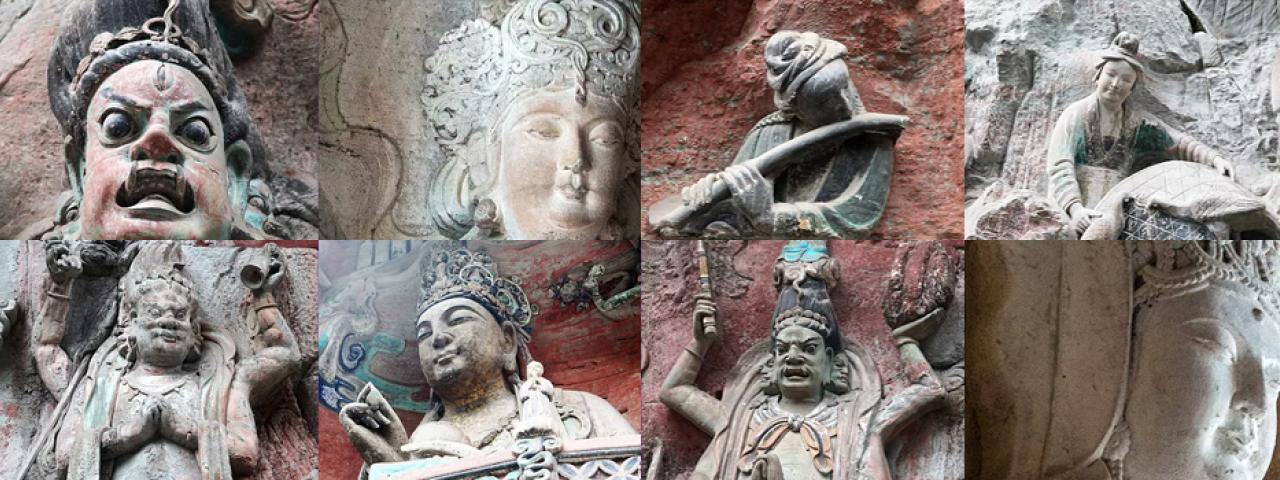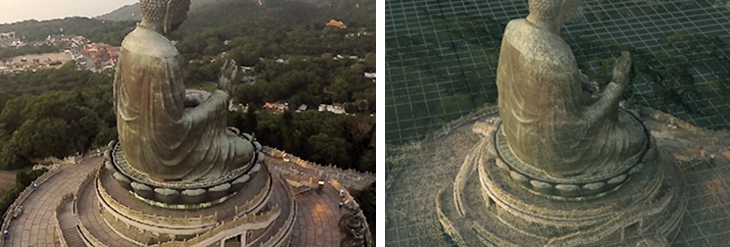
Wu-Wei Chen is a practitioner in digital heritage imaging and narration. Chen's main focus is on cave temples in China, and also other tangible heritages (textiles, papers) and intangible heritages (dialects, craft and performance). His research of cultural objects conservation by digital techniques was recently featured in Shanghai Daily. Here, he explains how the latest digital technologies are helping researchers not only to preserve cultural artifacts, but also increase our understanding and awareness of cultural heritage.
Why is digital heritage research important?
Cultural heritage faces tremendous challenges from the natural environment (breakage, deterioration, cracking, disfigurement, shifting earth, fire risks, insects, floods, redeposition, solubilization etc), and human activities (theft, vandalism, terrorist attacks, etc). Cyber-archiving, or monitoring, has become a preventive conservation effort to extend the life cycle of heritage objects and sites. Digital techniques also reactivate the ancient wisdom inherited from those cultural items by creating a didactic narrative.
Virtual Reality View | Digital Documentation of Gandhāra Style Diety from Body As Echoes on Vimeo.
What are some of the digital techniques researchers use to preserve cultural heritage?
By using high-tech optical methods such as remote sensing, GIS (Geographic Information System), laser scanning, photogrammetry, UAV (Unmanned Aerial Vehicles) we can provide non-invasive ways to access, analyze, document and preserve cultural heritage.
For remote sites like a monastery, low-tech methods also frequently provide some preliminary preservation for cultural objects, such as Tibetan Buddhist paintings, thangkas. UAV footage captured at disaster sites also helps reestablish the all-around spatial information that rescue teams and conservators need.

Can you give examples of some sites where digital preservation is being used, and how this has contributed to our understanding and protection of these monuments?
Human activity is one of the major factors jeopardizing the sustainability of heritage objects and sites. Universities and multi-national delegations have recently been visiting sites in Bamiyan, central Afghanistan and Mosul in northern Iraq to collect evidence, document and digitally reconstruct both site and objects of the site. These virtual objects are visualized by crowdsourcing travel images and compiling them into 3D models.
Tell us about the Digital Sculpting for Facial Animation course you’re teaching in Interactive Media Arts this semester.
In class, I deliver digital sculpting techniques and blend-shape animation to enhance students’ abilities on digital character creation and facial expression. The digital sculpting skills can also be utilized in digital heritage conservation such as to de-noise, enhance, and polish raw data of cultural objects after scanning, measuring or UAV footage shooting.
For senior-year or graduate students, the course can also be further implemented to visualize tangible heritage objects in 3D form, and open up intriguing dialogues between technology and philosophy. The course also has the potentials to collaborate with other departments on cross-disciplinary topics such as facial recognition or LiDAR applications at the cultural heritage sites.
--
Explore some of Professor Wu-Wei’s digital preservation work at www.bodyasechoes.com or read his paper Body As Echoes: Cyber Archiving of Dazu Rock Carvings
Read more: “Imagining Digital Future of Cultural Legacy” from Shanghai Daily, Shanghai Observer (in Chinese)

